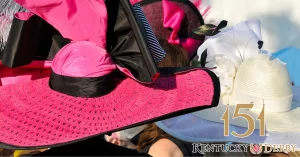The Derby Effect: How Kentucky Derby Results Influence Betting on the Preakness and Belmont

The Triple Crown of Thoroughbred Racing in the United States is an iconic series of three horse races—the Kentucky Derby (congrats, Mystik Dan), the Preakness Stakes (May 18), and the Belmont Stakes (June 8)—known collectively as the Triple Crown. It’s an elusive goal pursued by three-year-old thoroughbreds, each running to win all three races within the tight window of five weeks.
This prestigious trio of races tests the stamina, speed, and heart of the finest thoroughbreds, with the Kentucky Derby kicking things off on the first Saturday in May at Churchill Downs, followed by the Preakness Stakes at Pimlico, and culminating with the Belmont Stakes at Belmont Park.
The outcomes of the Kentucky Derby have a huge influence on the betting strategies and madness (in a fun sense) surrounding the subsequent races.
The Derby not only sets the stage but also builds the narrative for the Preakness and Belmont Stakes, so bettors and fans closely watched and analyzed the Derby results to gauge which horses might have the endurance to claim the longer and equally challenging Preakness and Belmont Stakes.
A strong performance in the Derby often shifts betting odds and public sentiment, propelling or demoting horses in the eyes of the wagering public for the next races. This knowledge changed the approaches to betting, with strategies pivoting based on the health, recovery, and perceived potential of the horses that ran in the Derby.
The intense focus on these horses can shift betting lines and influence decisions on where to place bets. It’s a fascinating interplay of past performance, speculative future success, and the unique conditions of each race. As such, the ripple effect of the Derby results is enthusiastically felt not only in the subsequent Triple Crown races but in the broader narrative of the sport’s season.
Understanding the Derby Impact
The Kentucky Derby historically sets the stage for the remaining two races in the Triple Crown—it influences both public perception and the betting trends for the Preakness and Belmont Stakes. Notably, the performance of Kentucky Derby winners at the Preakness and Belmont has varied, though a victory in the Derby frequently positions a horse as a favorite in the subsequent races.
The significance of a Derby win was clear—many horses that won both the Kentucky Derby and Preakness Stakes often came close to capturing the Belmont as well, although only a few completed the Triple Crown sweep. Several horses managed to win the first two jewels of the Triple Crown but faltered at the Belmont, showing just how hard it is to keep up a peak performance over the three different distances and conditions that are presented by the Triple Crown races.
And since the Preakness is shorter than the Derby, this can result in outcomes that either solidify or challenge the hierarchy established at the Derby. While some Derby winners also triumph at the Preakness, others find the quick turnaround and the slightly shorter distance a challenge. Similarly, the Belmont Stakes, known for its longer distance, has often served as the ultimate test for stamina and endurance, revising betting and viewer expectations set by performances in the earlier races.
The results of the Kentucky Derby play a big role in setting betting lines and building the narrative around a horse’s potential to achieve the Triple Crown, with historical trends showing a bigger impact on the outcomes of the subsequent races.
Changes in Betting Odds
Betting odds for the Kentucky Derby are initially set based on each horse’s performance record, expert opinions, and how the public views them. These odds can change notably after the Derby results are announced, as the race provides valuable information about each horse’s capabilities under pressure.
If a horse wins the Kentucky Derby against expectations, it will likely see its odds for future races like the Preakness and Belmont Stakes decrease, showing a newfound confidence in its abilities. On the other hand, if a favorite underperforms at the Derby, its odds in subsequent races could increase, indicating the expectations have dropped.
Notably, strong performances by Derby winners typically tighten their odds for the Preakness and Belmont as expectations rise for a Triple Crown contender. Conversely, if a Derby winner underperforms in the Preakness, it can lead to wider odds and more favorable betting conditions for other horses in the Belmont Stakes.
- A recent example involves the 2024 Kentucky Derby, where the odds for the favorite, Fierceness, were initially long at 29/1 but shortened dramatically to 7/2 closer to the race due to impressive performances in the prep races. This adjustment was a direct response to the betting public’s growing belief in the horse’s chances to win.
- Another example is from the 2018 Kentucky Derby, where Justify, a morning line favorite, won and subsequently saw tightened odds for the next races, reflecting his strengthened perceived chances for completing the Triple Crown, which he eventually did. This kind of odds behavior is a common trend observed across many editions of the Triple Crown races, underscoring the significant impact the Kentucky Derby has on betting strategies and decisions in the following races.
These changes show how perceptions of a horse’s winning potential can change in response to new info, which greatly affects how odds are set and updated leading up to the final two races.
Bettor Behavior Post-Derby
Post-Derby, both professional and amateur bettors tend to adjust their strategies based on how the horses perform at the Kentucky Derby. Trends from past races obviously guide their decisions, although relying solely on historical trends can be risky, especially with unexpected variables like weather or track conditions.
Professionals tend to analyze specific performance metrics and conditions from the Derby, adapting their strategies based on these insights. Amateurs, influenced by trends and media analysis, may follow these professional cues or bet based on exceptional performances and dark horse or underdog surprises from the Derby.
Media coverage and public perception have a notable influence when betting on horse races, particularly around major events like the Kentucky Derby.
Stories about horses or their trainers can shift betting odds as they capture public interest. For example, an underdog story or a narrative about overcoming adversity can prompt an increase in bets for that horse, driven by emotional support and strategic considerations from the betting public.
Additionally, the amount of media attention a horse receives can sway betting behaviors. If a horse is extensively covered and promoted in the media before the Derby, its odds might shorten as more people place bets, influenced by the visibility and perceived potential portrayed in the coverage. This shows how media narratives and expert analysis can directly affect public opinion and, subsequently, the betting odds.
The Role of Horse Performance and Condition
The condition and performance of Derby-winning horses are closely monitored as they move on to the subsequent Triple Crown races due to their big impact on betting odds. Usually, factors such as the horse’s recovery time after the Kentucky Derby, any training adjustments made in response to previous performances, and reports of injuries play crucial roles in setting their odds for the Preakness and Belmont Stakes. If a Derby winner emerges with minimal stress and no injuries, the odds might improve for future races. Conversely, if there are concerns about a horse’s recovery or condition post-Derby, this can lead to a shift in betting odds to reflect the increased risk.
Only a handful of horses have won all three Triple Crown races, which means it is a rarity—the challenge of sustaining peak condition across all events is no easy feat. The performance at the Kentucky Derby indeed sets a precedent but doesn’t guarantee victory in the subsequent races.
On top of Derby performance, bettors have to consider factors like recovery times, training adjustments, and any reported injuries that will affect the odds and performance of horses in the subsequent races:
Recovery Times
- The short span between the Kentucky Derby and the Preakness Stakes (only two weeks) puts pressure on a horse’s ability to recover quickly.
- Observations on how a horse exits the Derby, including signs of fatigue or vigor, influence odds and expectations for the Preakness.
Training Adjustments
- Depending on the Derby performance, trainers could adjust their strategies to showcase strengths or address any weaknesses observed during the race.
- Adjustments might include changes in workout intensity, duration, or even the training environment to better prep the horse for the specific challenges of the upcoming races.
Reported Injuries
- Any injuries reported post-Derby are critical in deciding a horse’s odds for the next races.
- Even minor injuries can lead to big changes in betting odds—they might impact the horse’s ability to compete at the same level in the Preakness and Belmont Stakes.
Overall Condition and Health
- Continuous monitoring of a horse’s health and condition by veterinary teams are done to optimize performance potential.
- This includes everything from muscle condition to joint health, which could be affected by the demanding Derby run.
These factors play massive roles in determining how well a horse is expected to perform in the strenuous Triple Crown series, directly affecting betting strategies and public expectations.
Both the physical and competitive readiness of a horse post-Derby is scrutinized in the betting world, with all of these factors influencing how odds are set and changed for the remaining races in the Triple Crown.
Psychological Factors
The pressure and expectations that come along with winning the Kentucky Derby can have a profound psychological impact on both the horses and their human teams. This victory doesn’t just boost the confidence of jockeys and trainers, though—it also puts a great deal of significant psychological pressure on them to keep up their momentum and perform well in the subsequent Triple Crown races.
- For the horses, winning a high-stakes race like the Derby can affect their mental and physical state, influencing their performance in the Preakness and Belmont Stakes races.
- Trainers and jockeys will most likely feel a heavier sense of responsibility to stay in top form, which can lead to careful strategic planning and adjustments in training regimens. This can look like the human team modifying training routines to focus more on stamina and recovery, especially if the horse showed signs of stress or fatigue during the Derby.
Not to mention the intense media spotlight following a Derby win, which can increase public expectations and the hype around the horse, which adds to the pressure; this intense attention can affect decision-making, with trainers sometimes changing up their strategies not just based on the horse’s condition but also in response to public and media expectations. The overall psychological atmosphere surrounding the team can become super focused and charged, which can either propel them to greater achievements or add extra stress that hampers performance.
Even though a Derby win is a historic achievement, it sets into motion a complicated tangle of psychological challenges as well as a shot of confidence for the winning team—both can influence their approach to the remaining Triple Crown races!
Case Studies
How exactly do the outcomes of the Kentucky Derby influence betting in the Preakness and Belmont Stakes? Look below to see how it did in recent years!
2015: American Pharoah
American Pharoah’s victory in the Kentucky Derby set the stage for historic betting enthusiasm as he aimed for the Triple Crown. His subsequent wins in both the Preakness and Belmont Stakes led to a surge in bets, particularly in the Belmont, where he clinched the Triple Crown, an achievement that hadn’t been seen since 1978. This scenario demonstrated how a strong performance in the Derby can significantly drive betting behavior in subsequent races.
2018: Justify
Similar to American Pharoah, Justify’s win at the Kentucky Derby and his pursuit of the Triple Crown captured the attention of bettors. His odds were heavily favored at the Preakness, which he won, maintaining strong betting interest through to the Belmont Stakes. Justify’s victories in all three races confirmed the trend that a potential Triple Crown winner boosts wagering activity across the series.
2020: Tiz the Law
Tiz the Law won the 2020 Kentucky Derby, held unusually in September due to the pandemic, and was a favorite for the Belmont Stakes, which was run as the first leg of the Triple Crown that year. His performance in the Derby influenced his short odds at the Belmont, which he won, demonstrating how Derby outcomes can predict betting patterns even when the traditional race order is altered.
These examples highlight how the Derby’s results can shape betting strategies and public interest, with bettors tending to favor the Derby winners or the stronger performers in subsequent Triple Crown races.
As for betting trends and outcomes, these are influenced by a multitude of factors like the following:
- Horse Performance: The most obvious and direct influence on betting trends is the performance of the horses themselves. A strong showing in the Kentucky Derby set the tone for the subsequent races, with winning horses typically seeing shorter odds in the Preakness and Belmont Stakes. Performance can be affected by a horse’s health, training regimen, and ability to adapt to the distances and track conditions of each race.
- Public Perception and Media Coverage: The way horses are portrayed in the media greatly affects public betting behavior. Positive stories or underdog wins lead to a surge in betting on certain horses, while negative press or concerns about a horse’s ability can sway bettors. Media coverage tends to amplify public sentiment, creating a feedback loop that can dramatically influence betting lines.
- Betting Strategies and Professional Analysis: Professional bettors use a combination of statistical analysis, historical data, and personal experience to make informed bets. These strategies can be influential, particularly if they become widely known throughout the media or betting communities. When professionals change their betting strategies based on Derby outcomes, it usually leads to broader changes in betting trends.
- Market Factors: Odds are also influenced by the amount of money wagered on each horse, which causes bookmakers to adjust the odds to guarantee a balanced book. Large bets on a particular horse can lead to shorter odds, while less betting interest could lengthen them.
- External Conditions: Factors like weather conditions on race day, track conditions, and even the position of the race within the Triple Crown series can affect both the actual performance of the horses and the betting odds.
All these factors come together to keep the betting landscape of the Triple Crown races really exciting and unpredictable. You never know what’s going to happen—things can change so fast based on the latest race results or changes in how people are thinking about the contenders. It’s this mix of performances, opinions, and external conditions that keeps everyone on their toes!
Conclusion
Now you’re off to the races! We have examined how the outcomes of the Kentucky Derby profoundly influence the betting landscape for the remaining Triple Crown races. Here’s a quick refresher on what we covered!
- Performance of Derby Winners: How horses perform in the Kentucky Derby heavily influences their odds and public perception of the Preakness and Belmont Stakes. Winners of the Derby often become the favorites for subsequent races.
- Media and Public Perception: Media coverage can dramatically amplify betting trends. Stories and expert analyses shape public opinion, which in turn impacts how odds are set and adjusted.
- Psychological Factors: Winning the Derby puts pressure on the teams and the horses, affecting their preparations and performance in upcoming races. The confidence levels among jockeys and trainers also play a critical role in race-day performance.
The Derby not only lays the favorite—it also serves as a barometer for assessing the potential of horses to withstand the rigors of the Triple Crown. The first of three races gives bettors a ton of valuable info that can be used to strategize their bets for the following two races.
Tips for Bettors
- Watch for Post-Derby Adjustments: Pay super close attention to how horses recover and how trainers adjust their strategies based on their Derby performances.
- Stay Informed on Media Reports: Media narratives can sway betting odds, so staying updated will give you an extra edge.
- Analyze Psychological Dynamics: Think about the psychological state of the winning team—it can impact their performance in the high-stress environments of the subsequent races.
- Bet Responsibly: Always remember to gamble within your means. Set a budget for your betting activities, and stick to it to avoid potential financial stress. Betting should be a fun thing and not a cause of financial or emotional distress.

Alyssa contributes sportsbook/online casino reviews, but she also stays on top of any industry news, precisely that of the sports betting market. She’s been an avid sports bettor for many years and has experienced success in growing her bankroll by striking when the iron was hot. In particular, she loves betting on football and basketball at the professional and college levels.








